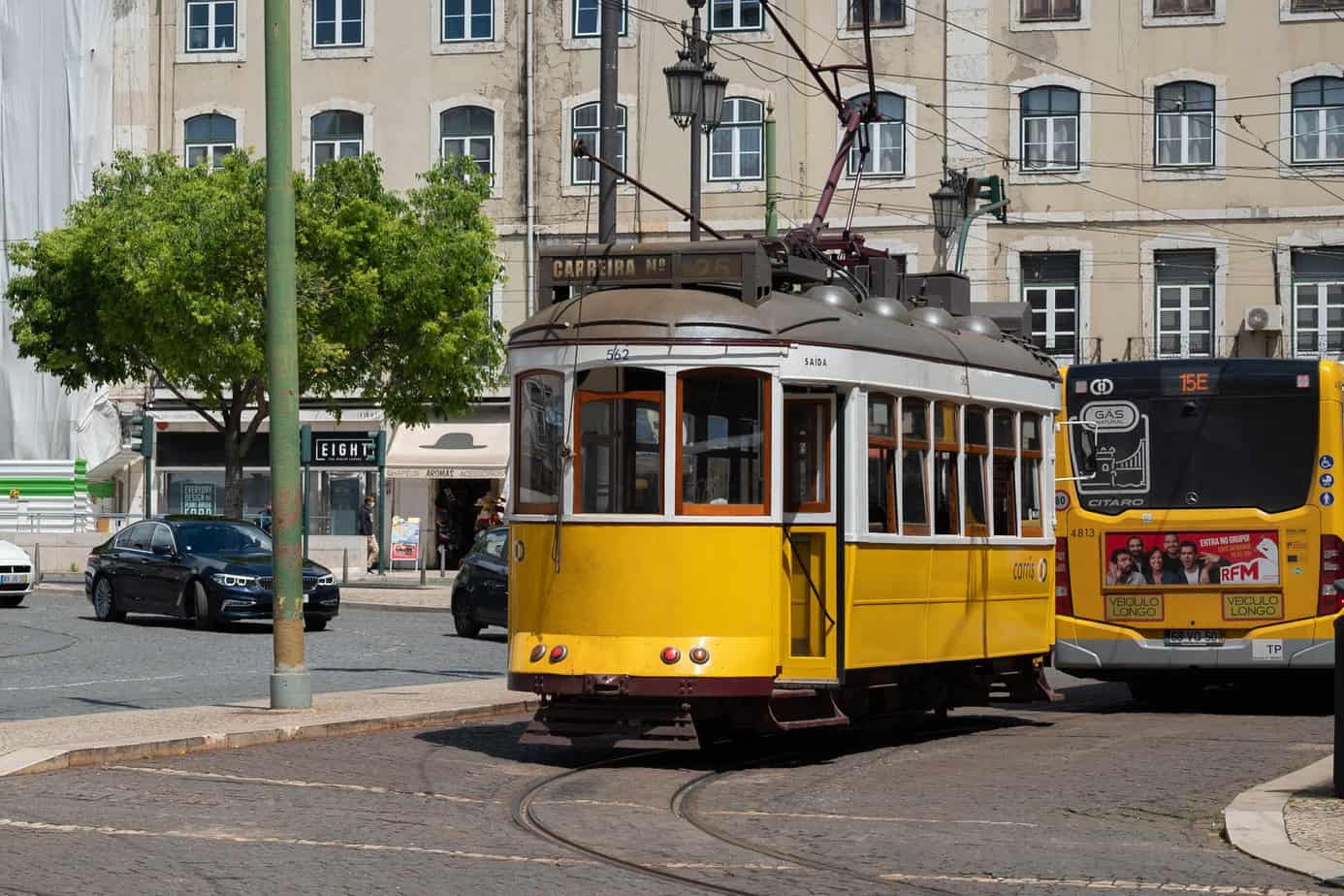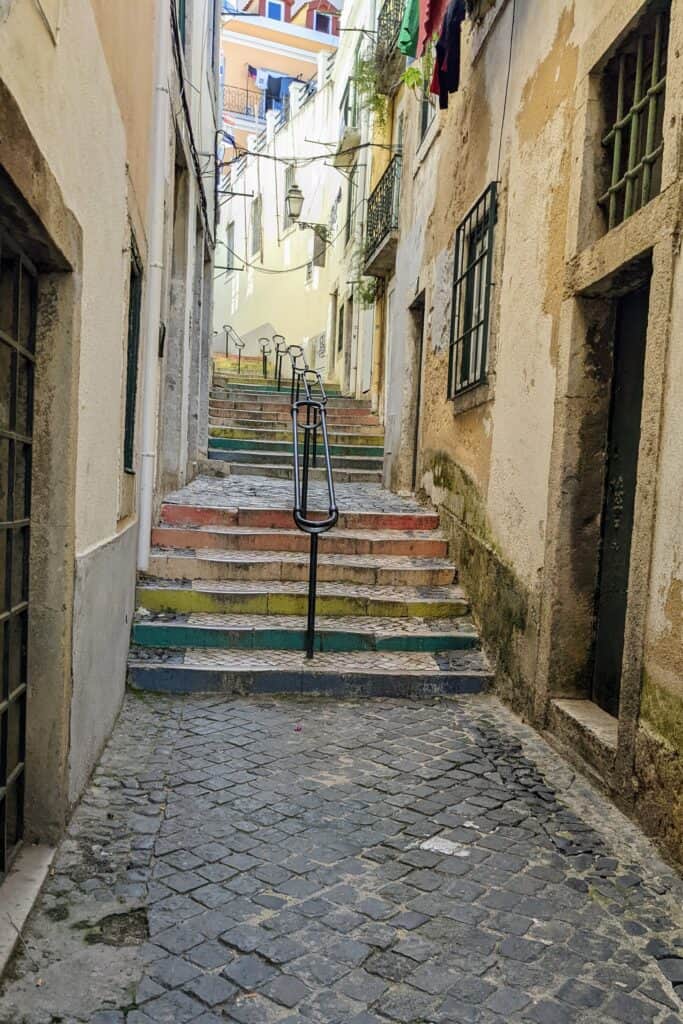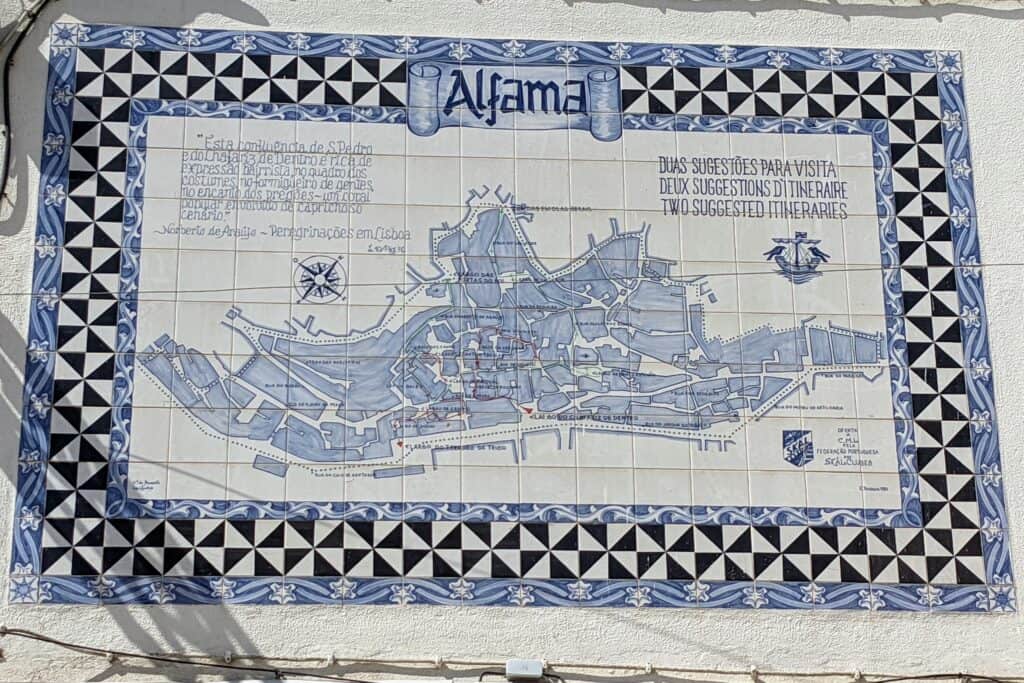Perfect Lisbon Bucket List: 20 Things You Must Do on Your Visit
Portugal and Lisbon are often overlooked by US travelers to Europe. My Lisbon Bucket List will show you why this is a mistake! There is so much to see, eat, and do!
On top of that, Portugal is affordable, and many of the Portuguese speak English, making it easily accessible.
You’ll fall in love with Lisbon as you make your way through this bucket list. I also include my tips about what you should skip. These aren’t necessarily in order, but I did try to group based on geography, at least a little bit!

Some of the links on the page are affiliate links. If you choose to purchase from one of the links, I earn money at no extra cost to you. I’ll only recommend brands I’ve used and love (or an alternative I would book myself). As an Amazon Associate, I earn from qualifying purchases. I always pay for my own travel. I’ll be sure to let you know if that ever changes. If you choose to click through and purchase – thanks so much for the support!

1- Take a Walking Tour
Lisbon is a city of hills and impressive tile work, and the best way to see it, like most cities, is by walking. Lisbon is also a relatively young city. An earthquake followed by a tidal wave destroyed much of it in 1755. Since they had to reconstruct almost everything, it is much newer than most European capital cities.
There are several options for walking tours in Lisbon. You’ll see many of the things on the list on your tour and can then go back to visit anything you’d like to see more of.
I really enjoyed Rick Steves’ free audio tour of Lisbon. Download the app and the free tour in your hotel room, take your headphones, and get started. I loved this option because I could pause the tour when I needed a break or wanted more time exploring an area. You could even do it in a couple of parts if you wanted a more extended break.
There are also electric bicycle tours and tuk-tuk tours of Lisbon if you want to see the sights but aren’t interested in walking.
2- Take in Praça do Comércio
Most tours, including the one I took, start in the Praça do Comércio. This square is on the waterfront, and it is massive! The statue in the middle is surrounded on 3 sides by magnificent uniform yellow buildings.
This plaza is at the center of life in Lisbon. Locals will host demonstrations here, and the city’s festivals are often based here. There are multiple restaurants and shops to explore around the perimeter. Artisans sell their goods here as well. Trams noisily move along the main road nearby. If you’d like to check it out from the air, you can go to the top of the archway.
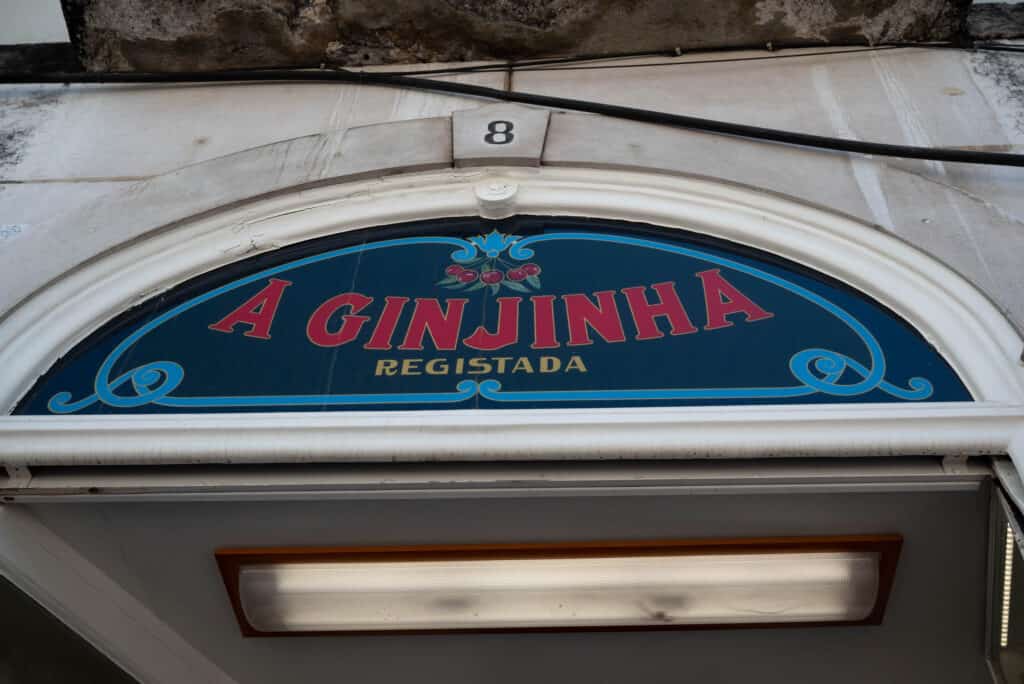
3- Try Ginjinha
There is an entertaining story behind ginjinha. It’s a medicinal alcoholic drink traditionally made by monks. I’m not sure how medicinal it is, but it’s worth a try. It is made from sour cherries and tastes like cough syrup. I wasn’t a huge fan, but my husband really liked it!
Ginjinha is traditionally sold in a chocolate cup. You drink it and then eat your cup!
You’ll likely find vendors in the Praça do Comércio, but you should check out A Ginjinha. This little shop traces its roots back to 1840. Stand in line and get a shot glass or bottle of ginjinha.
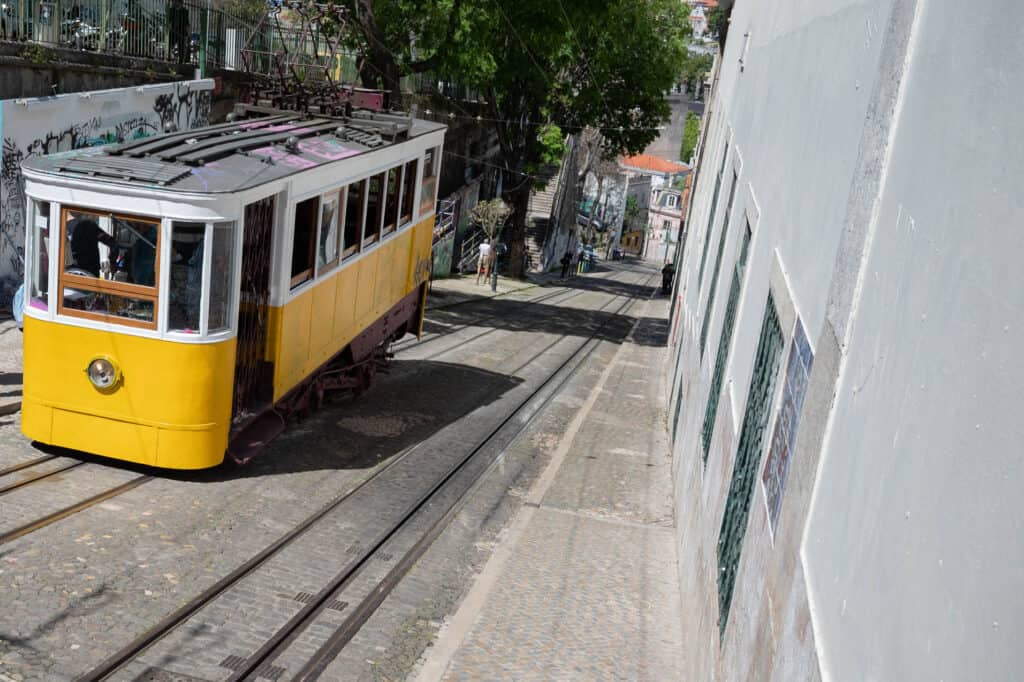
4- Ride a Tram
The steep hills in Lisbon, combined with the slim, windy streets, make trams ideal transportation. Parts of the city have upgraded to new trams, but updating isn’t an option in the older part of the city. The older style of the tram is the only type that can navigate the steep hills and tight turns. It’s fun to ride one but even seeing them travel around the city is fun!
The older trams still look like a picture of the city in the 1930s. Interiors lined with polished wood and bright yellow exteriors make them iconic. They really are one of the most notable things in the city.
Tram 28 pops up on every list you read for Lisbon. Do not fall for it! I visited in April 2022, and every time we saw this tram, it was jam-packed. I wonder if we could have squeezed into the madness even if we’d wanted to. The scenic ride is a perfect example of a route that a modern tram can’t take. Unfortunately, it was so crowded it wouldn’t have been an enjoyable experience. We visited during the shoulder season; I can’t imagine what summer would look like. Also, Tram 28 is known as a hotspot for pickpockets in Lisbon.
If you must take Tram 28, go early in the morning, board at Martin Moniz, ride the whole route, and be very aware of your surroundings.
If you’re flexible, consider the E12 or E24 routes.
The Elevador da Glória was enough for me. Meet this tram in Praça dos Restauradores and take it to the Barrio Alto. It’s a shorter ride and isn’t anywhere near as popular as Tram 28. It certainly isn’t as scenic. I enjoyed the experience and the lack of a crowd!

5- See the Bairro Alto
Bairro Alto is one of the 3 main areas in Lisbon. The other two are:
- Baixa (where the Praça do Comércio and A Ginjinha can be found).
- Alfama, which we’ll talk about in a bit.
There are other areas, but these 3 come up the most.
Bairro Alto is a more “working class” neighborhood, but it’s such a charming area. Wander through the small streets, taking in the tile work and bars. This area is one of my favorite parts of the city. It feels like a neighborhood that knows itself and is shameless in displaying its character.
Bairro Alto comes alive at night and is filled with visitors and locals at bars and restaurants.
The view from Miradouro de São Pedro de Alcântara was my favorite view of the city.
6- Visit the Carmo Convent
The Carmo Convent was mostly destroyed by an earthquake in 1755. It still stands as a reminder of the level of destruction that happened that day.
The 9.0 magnitude earthquake destroyed much of the city and led to the city structure today.
You don’t have to enter to see evidence of the destruction. If you go inside, you can see piles of rubble inside the convent.
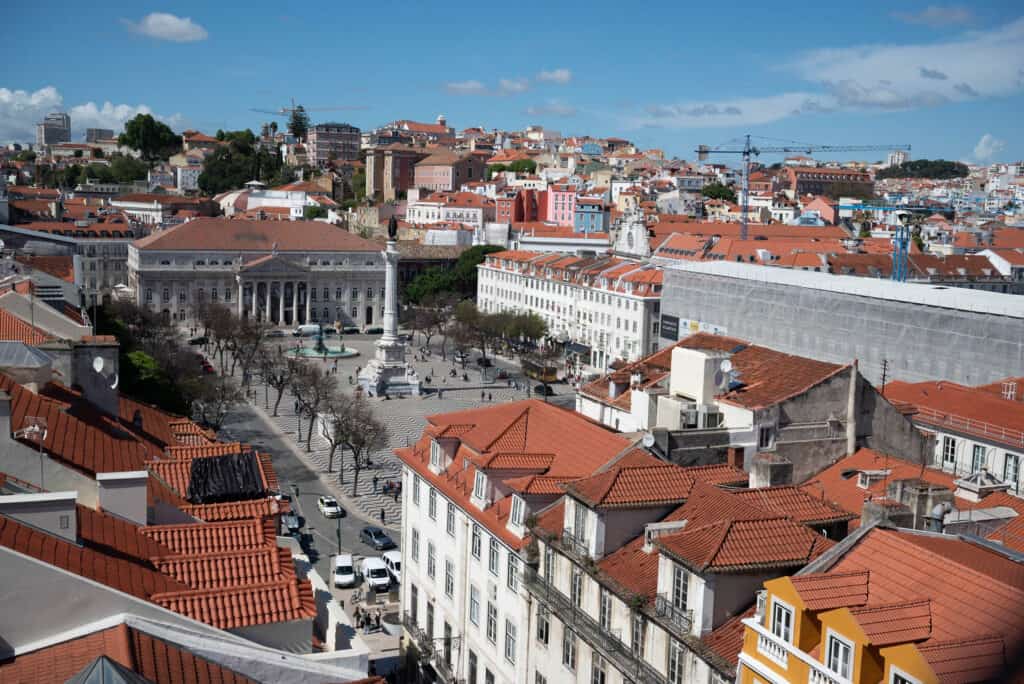
7- See the City from the Santa Justa Elevator
The Santa Justa Elevator is an attraction on every Lisbon bucket list. Rightly so. Designed by one of the students of Gustave Eiffel (yup, that Eiffel), the elevator is functional and beautiful. It’s also a major tourist attraction. So, it can get very crowded and can be expensive.
The elevator is more than just a decorative piece of architecture. Lisbon is a city of massive hills. So, the elevator actually solved a problem when it was initially built. Only later it became a point of interest for tourists. However, it’s still a part of the Lisbon public transportation system.
A ride on the lift is included in your daily transportation pass. If you don’t have a transportation pass, it will cost you €5.30. The ticket includes a return ride and access to the viewing platform.
The elevator opens at 7:30 a.m. each day.
It closes at 9:00 p.m. in the winter and 11:00 p.m. in the summer.
The viewing platform opens at 9:00 a.m.
Visit early in the morning or in the afternoon to avoid crowds.
Take in the view from the middle platform without having to go all the way to the top. We opted for that, but I would say that going to the top of the viewing platform is a good idea.
Riding the elevator wasn’t necessary for us as we wandered through the area. Rick Steves gets you there if you follow his tour.
The elevator is a tourist attraction for a reason. The view is stunning, and the structure is a work of art. Riding on the elevator is not worth much effort, but it is worth visiting.

8- Visit São Jorge Castle
São Jorge Castle is an imposing fortress on one of the hills in Lisbon. It’s impossible not to notice it.
The castle is open from 9:00 a.m. to 9:00 p.m. daily. Tickets are €10. No need to purchase them early.
When visiting the castle, you’ll get a chance at one of the best lookouts in the city. The castle was built in the 11th century and was a castle for protection. It was never a residence for the Portuguese royals. Therefore, it has a more rustic and military vibe. Walk on the walls and go into some towers as you explore the castle.
The castle didn’t take too long to explore, and it was worth the visit. The views are best at sunset or in the afternoon. They weren’t bad in the morning, though!
9- Wander the Alfama District
The Alfama district of Lisbon is one of the most well-known. It will be on every visit list, and it should be; if my list were in order, Alfama would be at the top. This is the oldest part of the city and has so much character. São Jorge Castle, the cathedral, and the pantheon are in this area, making Alfama the heart of historic Lisbon.
The neighborhood is known for its labyrinth of alleys and winding cobblestone streets. The area is historical and artsy. It is so much fun to wander! Check out shops and restaurants. Allow yourself to wander and get lost.
Take transit to the castle at the beginning of the day and walk through Alfama on your way down.
10 -Experience Fado or the Fado Museum
Fado is all over Lisbon. This style of music is unique to Portugal, and they take great pride in it. Fado is bluesy. It’s commonly described as music that shows “longing.” Themes are often sad, lamenting, or mournful. Fado bars are all over Lisbon. Many are tourist traps, but you can find some worth visiting. Check Alfama or Bairro Alto areas.
If you’re not down for a visit to a fado bar, check out the fado museum (in Alfama). The museum is open from 10:00 a.m. to 6:00 p.m. except for Mondays. This music is important to Portuguese culture and history, so it’s worth learning about it on your trip.
11- Admire the Tile Work
Portugal is known for tile work, and Lisbon is full of it. No matter where you’re wandering, look for ornately tiled buildings.
Some tile work is the traditional azulejo tile. These blue and white tiles are fun to look for. You’ll also see elaborately tiled buildings throughout the Bairro Alto and Alfama districts. My favorites were in Bairro Alto. There is so much character and artistry in each of them.
While you’re walking, remember to look down. The buildings are stunning, but the sidewalks are covered in black and white tiles. The designs are often representative of the neighborhood or city you’re in.
One note, the tiles are slippery even if it hasn’t rained. So, choose shoes carefully. Take extra care if the tiles are wet (especially on the hills).
12- Walk up one of the many hills
Lisbon is great about having transportation to get you up the steep hills. But, if you’re up to it, walk up one of the steep alleyways for a bit. There are some charming ones in the Alfama district to pick from.
This is a city where you’ll want to take transit to survive. These hills are no joke unless you’re a marathon runner or something. I’m in pretty good shape, and it was still a struggle! But, the hills are part of the experience. If you can physically handle it, take at least a short stroll up one of the hills.
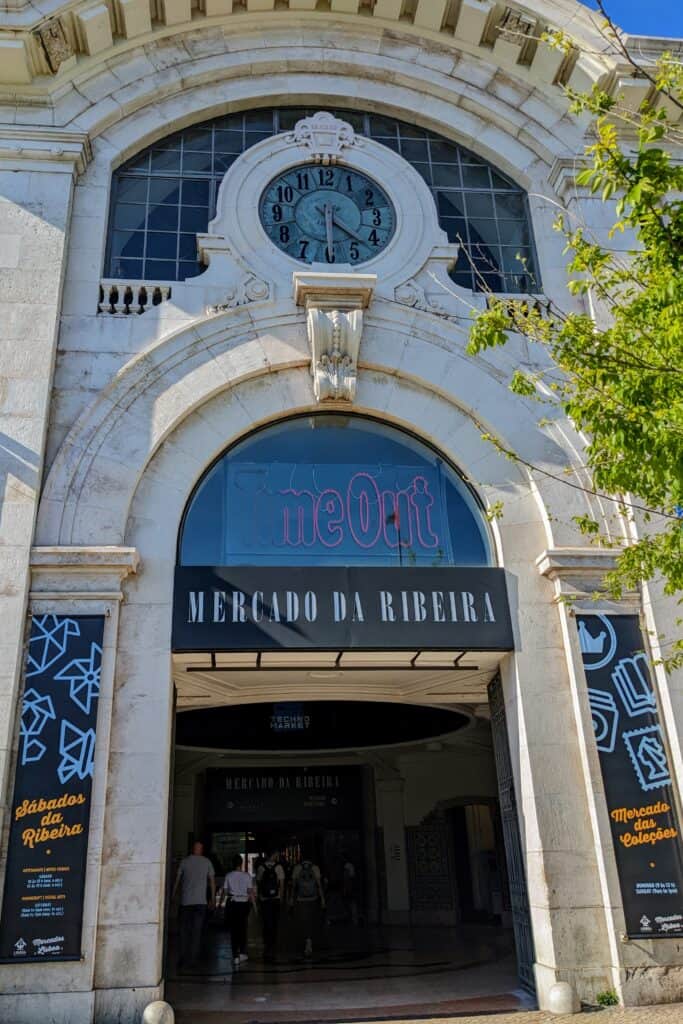
13- Eat at the Time Out Market
Time Out Market is by the waterfront. There are Time Out Markets in other major cities; this wasn’t the first one I’d visited. It’s a fun market with different restaurants at night. Buy dinner, pastries, or donuts, depending on what you like. Earlier in the day, a fruit and fish market was on the second side.
If you’re on my site as a Celiac- there won’t be much for you here, but it’s still fun to experience.

14- Wander the Pink Street
Lisbon’s Pink Street is in Cais do Sodre. It’s a quick stop and is on my list because I found it very cute. If you’re not interested, no worries; skip it.
Pink Street used to be the Red Light District in Lisbon. The city painted the street pink, brothels closed and bars opened. The pink isn’t as vibrantly beautiful as it once was, but it’s still adorable (it’s also my favorite color).
To get a picture without crowds, visit early but give time for the streets to be cleaned up from the previous night. It’s not the red light district now, but it is still full of popular bars!
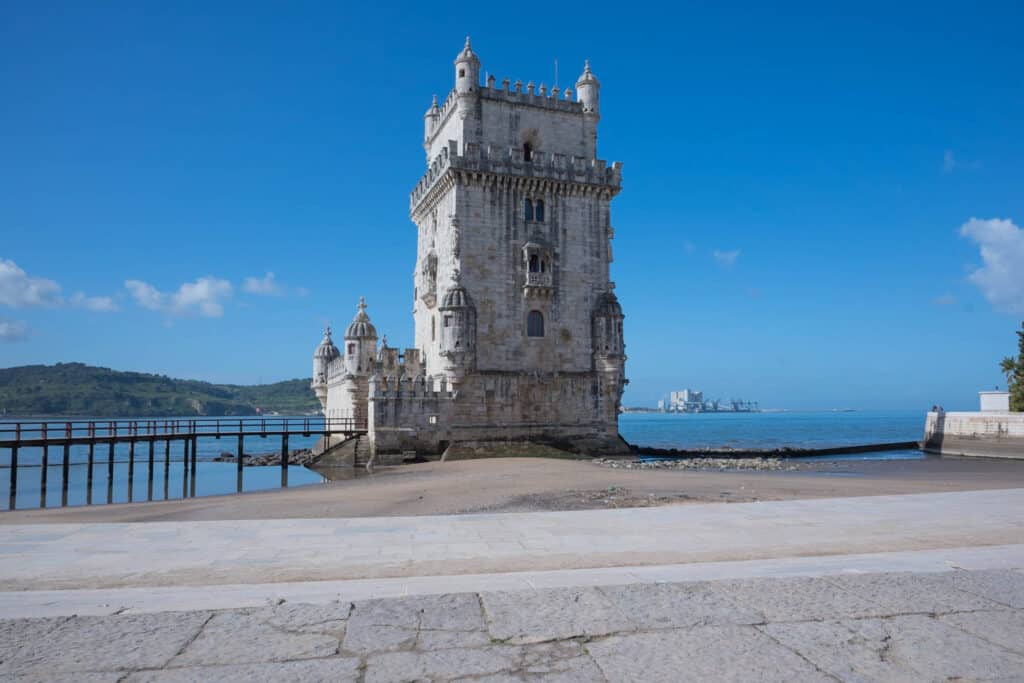
15- Visit the Belem Tower
The following few items on the list are in Belem, so you should plan to visit them on the same day. The Belem Tower is one of the most well-known attractions in the city. From the city, the 15E tram takes you out to Belem.
It was a defense structure and the port of entry for arrivals by sea. It is also insanely ornate. It was built at the height of Portuguese exploration. This beautiful building that was built as a defensive tower and later used as a dungeon is interesting to explore.
The tower is famous and can get busy. We arrived before the tower opened, and it was a perfect time to get some pictures without a crowd. We also bought our tickets when the ticket booth opened, but you can buy them early. The crowds were smaller than later in the day.
It’s open from 10:00 a.m. until 5:30 p.m. and is closed on Mondays. Tickets are €6.00. Buy your tickets from a nearby kiosk. You can’t buy tickets from the person checking them at the entrance.
16- 25 de Abril Bridge
This bridge is the largest suspension bridge in Europe. It’s very similar to the Golden Gate Bridge in San Francisco. You can cross the bridge if you’d like, but you can also see it quite well from the viewpoint of the Belem Tower.
The LX Factory, a hipster shopping/art/food site in an old factory, has a great view of the bridge.

17- Check out the Discoveries Monument
After you finish your visit to the Belem Tower, walk down the waterfront in the direction of Lisbon proper, and you’ll see the Discoveries Monument. This monument pays tribute to those who played significant parts during the Portuguese age of exploration. Henry the Navigator is at the head of the monument, looking out to the ocean. Various Portuguese explorers line either side of the monument. You can go to the top of the monument if you’d like.
It’s a quick stop but an interesting monument. Food and ice cream stalls along the walk from the tower to the monument if you need a snack or a drink.
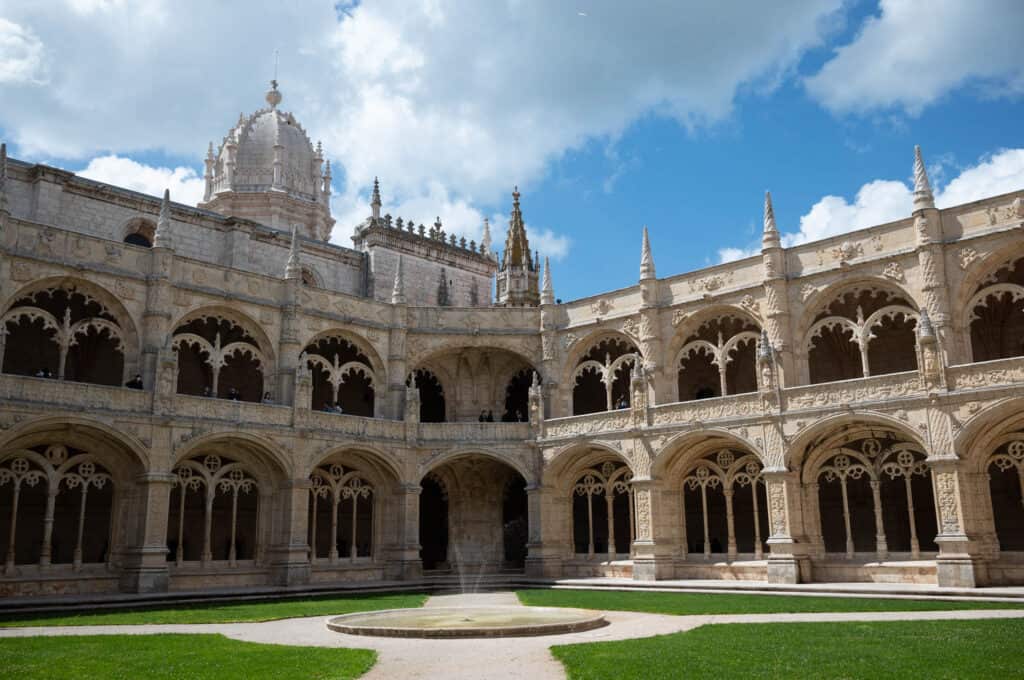
18- Experience Jerónimos Monastery
Jerónimos Monastery was one of the most beautiful buildings in Lisbon. It was also one of the most confusing to figure out.
There will be two lines. The line on the right goes into the Church of Santa Maria.
It is free to enter the church, so the line moves quickly. The church is uniquely structured; the way the columns are arranged gives the illusion that it goes on forever! Find the tomb of Vasco de Gama in the church as well. You’ll pass by it as you exit.
The line on the left is the line for the monastery. Buy tickets beforehand or while you wait in line. A ticket to just the monastery is €10.00. Alternatively, when you buy your Belem Tower ticket, you can buy a Belem Tower + Jeronimos Monastery combo ticket for €12.00.
The cloister in the monastery is 2 stories and beautiful! You’ll also see the Church of Santa Maria from a balcony.

19- Eat Pastel de Nata
Pastel de Nata is a bite-sized custard pastry Lisbon (and Portugal) is known for. The most well-known bakery is in the Belem area. If you’re not gluten-free, pick up a few from Pastéis de Belém. It’s just down the road from the monastery. The line may be long, but it moves remarkably fast! Our travel buddies got several different pastel de nata pastries in Portugal, and these were by far their favorites.
If you are gluten-free (or vegan), head to Zarzuela. It’s near Time Out Market, and the pastries were delicious!
20- Take a Day Trip
Okay, this isn’t technically in Lisbon, and I know it’s a Lisbon Bucket List. But hear me out; there are so many great day trip options from Lisbon it would be a miss not to take at least one.
The most popular is a trip to Sintra. Sintra is 30 km from Lisbon and is well-connected by trains and tours. This is where you’ll find Pena National Palace, a yellow and red castle that looks straight out of a storybook. There are several sites to visit other than Pena Palace. If you’re in Lisbon, you need a whole day to visit Sintra. It’s worth the trip.
Consider taking a trip to see the beaches in Cascais if that’s your scene.
Visit the Mafra National Palace for an off-the-beaten-path trip. Portugal’s Golden Palace is massive, and the library is perfect. This could even be done as a half day if you’re willing to pay for ride shares (which likely won’t be that expensive)
Take a train to Tomar to learn more about the Knights Templar.
Enjoy a long day exploring Évora and Portugal’s Chapel of Bones. It’s as creepy as it sounds.
Where to Stay
One thing about Lisbon is that most things are relatively close. The main sites of Lisbon proper are reasonably close to one another, but Belem is further out.
We chose to stay on the city’s west side for convenience to Sintra and Belem. The Emerald House was a great hotel, and I loved everything about it. Breakfast was delicious, the staff was kind, and the location worked out really well for us. There was a tram stop nearby that made transit easy.
If I was picking another place to stay, I’d choose the Chiado/Baixa area. This area is central and well-connected! These are my picks for an apartment-style or an affordable, well-reviewed hotel.
Alfama is also an option. It has so much character and is home to several of the highlights in Lisbon. Just be prepared for the hills! Public transit in Alfama is adequate but not extensive. This is the area that necessitates the use of old-style trams. What it lacks in transit options, it makes up for in character, though! My picks for Alfama are apartment style and an affordable, well-reviewed hotel.
Bairro Alto is home to Lisbon’s most well-known nightlife. It also has some upscale apartment lodging and more upscale hotels.
The good news is Lisbon has many options, no matter your budget. Be sure you know where your nearest transit stop is. You may also want to do a Google street view to see how steep the surrounding roads are. If they’re steep and you love the place, you should still stay there. Take a cab/rideshare instead of lugging your bags up steep hills!
Getting Around Lisbon
Transit around Lisbon is extensive, and it’s also a must. This isn’t a city you can explore on foot. It’s just spread out and hilly. You can explore in chunks but multiple days is a lot!
That being said, if you’re traveling with friends, consider looking into ride shares. Uber was incredibly affordable. With four of us, it was often cheaper than the public transit option.
If you’re solo or a couple, the daily transit pass for Lisbon may be worth it. You won’t regret being able to take trams when you’re sick of walking on the tiles. You can also get the Lisbon City Pass which gives you admission to attractions (like those in Belem) and the public transit system.
Lisbon has lots of train stations that leave the city. If you’re taking day trips, know which station you’re closest to and which station has the train you want. Unfortunately, they may not be the same! It was confusing initially, but it started to make sense as I got used to the city.
How many Days in Lisbon?
There is so much to do in Lisbon! 2 days to explore Lisbon and Belem is plenty. To include Sintra, add another day. For any other day trip, you’ll need more time. We spent 5 days and were able to explore extensively.
If you only have 2 days, you’ll have to decide between seeing more of Lisbon or Sintra. Sintra is unforgettable, so it may be a difficult choice! Spend 3-5 days if you can!
Lisbon is a fun city to visit, with so much to see and experience. This Lisbon bucket list can get you started or be your guide for your trip!
Is 4 days in Lisbon too much?
No! 4 days in Lisbon would be almost perfect! You’d have some extra time for day trips to amazing sites outside of the city.
